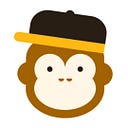Punjabi Pronouns — Easy Guide To 7 Types Of Pronouns
Original blog post: https://ling-app.com/pa/punjabi-pronouns/
Do you want to learn the Punjabi language? If you say yes, then the knowledge of Punjabi pronouns will help you out in your language learning journey.
Punjabi is an Indo-Aryan language widely spoken by Punjabi people around the world, mainly in Pakistan and India. If you want to learn Punjabi, you can use the Ling app. It is a language learning app that helps you understand your desired language quickly.
We all know the importance of subject, adjectives, verb, nouns, and adverbs in Punjabi grammar and sentences. The Punjabi pronouns also play a vital role in Punjabi complex sentences and paragraphs.
Punjabi Literature — Concept Of Punjabi Pronouns And Sentences
Punjabi is written in India using the Gurmukhi script, which is especially referred Sikhs. That script belongs to the Indic family of scripts, but it differs greatly from the Devanagari. In Pakistan, the Urdu script is used to write Punjabi, and it is now known as Shahmukhi. Thus, Punjabi is one of the few languages to be written in two distinct and mutually incomprehensible scripts.
Pronouns are words that we use besides nouns to make a sentence more symmetrical. Pronouns are usually applicable where the noun is used more frequently. One of its examples is, “Josh is a boy. He likes to play table tennis.” In this sentence, “He” is a word that acts as a pronoun. Namespaces in computing are used to identify various types of objects. The same way pronouns and all their types work.
Let’s discuss different types of Punjabi pronouns and their usage in other sentences.
7 Types Of Punjabi Pronouns With Examples
There are different types of pronouns depending upon their usage concerning the sentence. Let’s go through all the pronouns we possibly can.
1. Possessive Pronouns
A pronoun that indicates a possession is called a possessive pronoun. Read the below table carefully to understand more about this pronoun.
2. Personal Pronouns
Personal pronouns are words that we use instead of the name of the person or animal. These are different for both genders and singular and plural nouns. In English, these types of pronouns are divided into first person, second person, and third-person pronouns, and the same goes with the Punjabi pronouns.
Following is a brief introduction of these pronouns and their translation/pronounce in Punjabi.
- First-Person Pronouns
The First-Person pronoun belongs to the person narrating the story, e.g., I and We. You can translate these words as “ਆਈ and “ਅਸੀਂ.” You can pronounce these first-person Punjabi pronouns as “Maiṁ” and “asīṁ.”
- Second Person Pronouns
These pronouns refer to the person to which the story is being told. The second person pronoun is used in sentences as “You.” In Punjabi, this word is written as “ਤੁਸੀਂ” and pronounced as “Tusīṁ.”
- Third Person Pronouns
You can use this type of pronoun when we tell a story about another person. That person refers to a third person. “He, she, it, and they” is a set of all possible available third-person pronouns. We use “He” and “She” for both genders, “He” for the singular male gender, and “She” for the feminine gender.
Other additional terms like “It” and “They” are used for animals or things and plural nouns. By translating these pronouns in Punjabi, we can write “ਉਹ.” This single Punjabi word is used for all four third-person pronouns and is pronounced as “Uha.”
Cases Of Personal Pronouns
Three cases indicate the relation of personal pronoun to the word that it is used with. Let’s take an example. “Baisakhi occurs in April, John. You know nothing about Punjab”. “John” follows a vocative case in this sentence, while “You” forms a nominative case. In an oblique case, the pronoun can follow any role besides the subject.
3. Reflexive Pronouns
The pronoun that refers back to the subject of a clause or sentence is called a reflexive pronoun. As a reflexive pronoun, we use “myself, herself, himself, themselves and itself” in a sentence. In Punjabi pronunciation, you can say these words as “Āpaṇē āpa nū.”
4. Indefinite Pronouns
A pronoun without a specific familiar reference is called an indefinite pronoun. The example of these pronouns is “something, anything, anyone, everyone.” These pronouns in Punjabi can be written as “ਕੁਝ, ਕੁਝ ਵੀ, ਕੋਈ ਵੀ, ਹਰ ਕੋਈ” and pronounced as “Kujha, kujha vī, kō’ī vī, hara kō’ī”.
5. Demonstrative Pronoun
Demonstrative pronouns refer to the words that we use to point out something. “These, that, this, and those” are some demonstrative pronouns. “These” and “this” are pronounced as “Iha” while “that” and “those” are pronounced as “uha” in Punjabi.
6. Interrogative Pronouns
A word that we possibly use to ask specific questions is called interrogative pronoun. These types of terms include “which, what, who, whom and whoever” that are pronounced as “Jō, kī, kauṇa, kisanū, and jō vī.” In the following table, you will be able to understand these words and their usage easily.
7. Relative Pronouns
A pronoun that heads an adjective clause is called a relative pronoun. To understand this pronoun, we can use different examples. “This is the house that John bought.” In this sentence, “that” is a relative pronoun pronounced as “Uha” in Punjabi.
Learn Punjabi Through Ling App
After learning about Punjabi pronouns, you will be able to use these in your conversation. But other additional terms like a verb, nouns, adjectives, and clauses are also necessary to learn. To better understand the Punjabi language, you can use the Ling app that is made by Simya Solutions. With the help of its mini-quizzes, practice questions, and game-based system, you can learn Punjabi conveniently.
For instance, you can read our blogs on “Greetings in Punjabi” and “Basic Punjabi Words and Phrases” to learn Punjabi deeply. If you want to learn another foreign language, go to a browser and visit the Ling app to have 60+ languages options.
